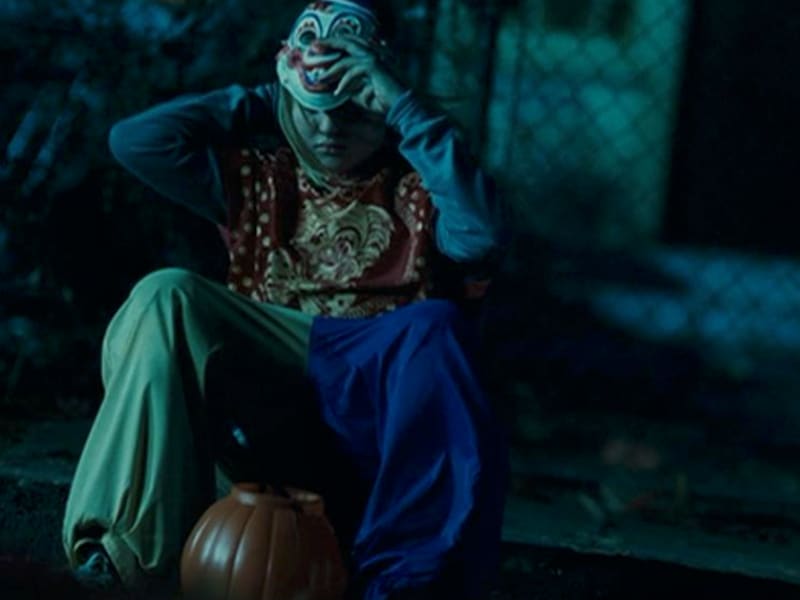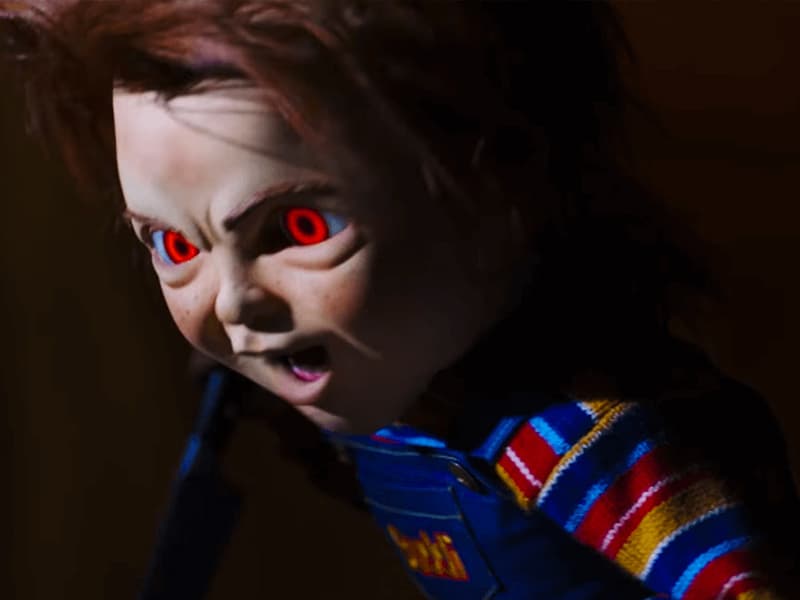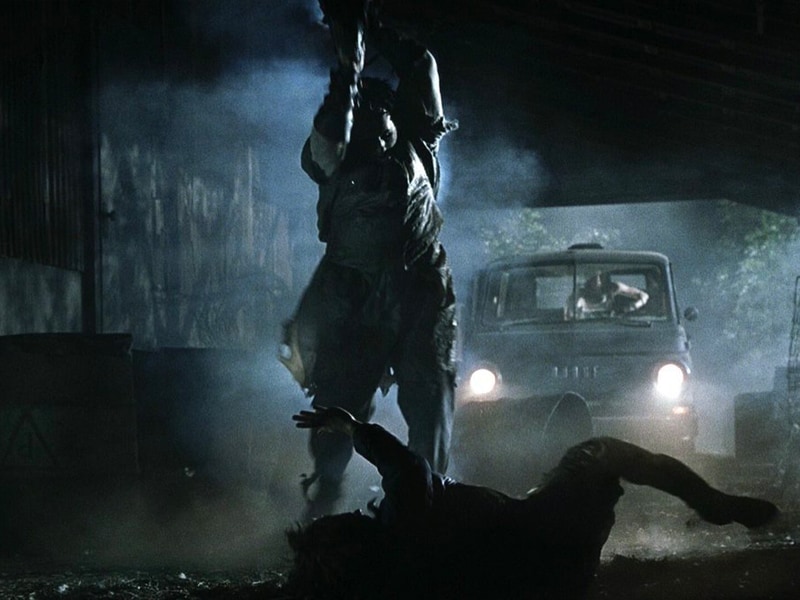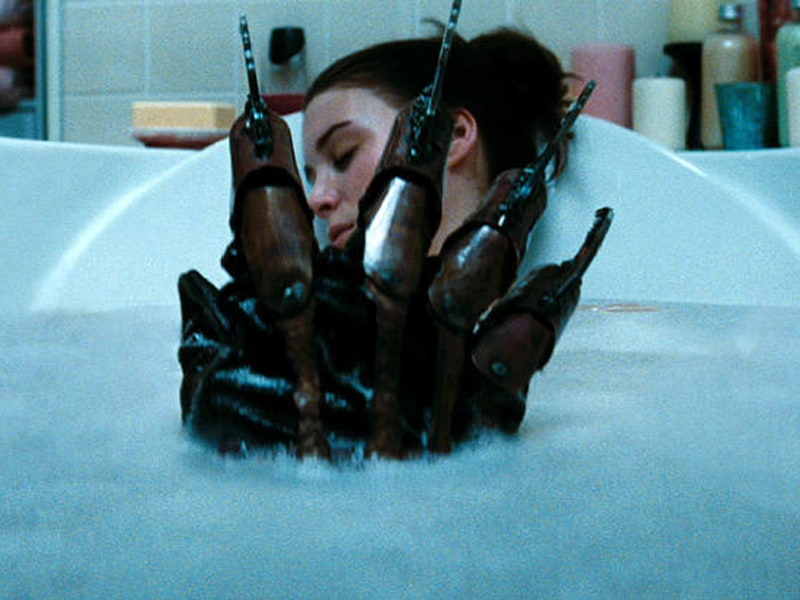Welcome to Carnage Classified, a monthly column where we break down the historical and social influence of all things horror, then rank the films of each month’s category accordingly. Franchises, movements, filmmakers, sub-genres, etc…It’s all here! This entry is about slasher remakes. Let’s get to the breakdown.
For horror fans, October is the best time of the year. We overindulge in our already indulgent horror movie watchlists. We add new flicks to the lineup, searching for new scares while reminiscing in old favorites. Somewhere on that recycled film list, there’s a group of names that are destined to make an appearance at least once: Leatherface, Michael, Jason, Freddy, Chucky.
It’s hard to pinpoint what exactly ties the horror fandom’s cult love for these films together aside from their habitation in, or proximity to, the golden age of slashers. While this era is technically bound within the years of 1978 (enter: Halloween) and 1984 (hello, A Nightmare on Elm Street), I find it equally important to look at the films that preceded and succeeded it. Every slasher we encounter is, even perhaps subconsciously, based on the icons previously mentioned, even though Chucky and Leatherface are excluded by these parameters.
But what is it about these slashers that lets them live rent-free in our minds decades after release? The plots themselves are all formulaic, but the killers are special. In slasher films, the genre is synonymous with the figurehead, not the plot — it’s the killers we root for. Like so many other horror films, these slashers aren’t victim-focused. Although we spend more time with those characters who succumb to their slaughter, we’re far more interested in the person wielding the weapon.
The killers don’t have a personal motive to victimize certain characters in particular — it’s simply misplaced anger, selfishness, latent repressed sexuality, or downright bloodthirst — and we’re along for the ride. We’re drawn to either end of the spectrum: relentless personality from Freddy and Chucky or unwavering coldness from Jason, Michael, and Leatherface.
Thematically, this pinnacle era of slashers centered on teenagers, allowing the target audience to see themselves in the films. Yet the lack of adherence to logic and heightened suspension of disbelief permits enough separation from reality to make these films fun, not existential. This focus on youth allowed the plot’s set up to focus on what teens seem to love the most: sex and violence!
The youth-centricity of the 1970s and 1980s is clearly what defined the horror filmmaking of the era, but why did these classics later get remade? Save for Child’s Play, each of these franchises had concluded by the late 1990s or early 2000s. History tells us that nostalgia creeps around about every twenty years. When the 2000s hit, even with a vastly different culture and fashion, we had our eyes looking back to the ’80s.
Despite how visibly different the 2000s seem to be, they were equally youth-centric: think about any hit television show, like My Super Sweet 16 or The Hills. Teens loved watching other teens live their dramatic lives, so why not also watch them lose those lives at the hands of brutal masked men? Of course, there was also the revival of teen horror spawned by 1996’s Scream that contributed to slasher nostalgia and prepped the stage for new additions.
Slasher films set themselves up for immortality because the killers don’t seem to die, and the victims can’t seem to escape. Given all these factors, it’s no surprise that we saw these iconic films rebooted in the 2000s and on. But can they stand on their own merit, or are they irredeemably subservient to their parent films?
This week we’re looking at the following remakes: The Texas Chainsaw Massacre (2003), Halloween (2007), Friday the 13th (2009), A Nightmare on Elm Street (2010), and Child’s Play (2019).
Onto the ranks!
You are hereby warned that the following may include spoilers and discussions of films that include mature content, including sexual assault, abuse, and suicide.
5. Halloween (2007)

Rob Zombie’s Halloween is promising in its narrative spin. However, it ends up unspooling its potential as soon as we get settled. Uniquely, it puts more focus on Michael Myers as a child, aiming to give context, reason, and background to one of slasher history’s most arcane figures.
We spend nearly forty minutes watching Michael’s childhood play out: his unstable home life, his torment at school, and his own psychopathic tendencies. He is coddled by Dr. Loomis, his mother, and even the janitor at the institution. His obsession with masks is labeled as a desire to hide within, and from, himself. He is concretely humanized. We’re fed loads of emotional capital, so when Michael kills as an adult (Tyler Mane), the film posits it as chapters in his psychological survey.
Sensationalism is equally integral to the plot. It runs consistently parallel to the brutal murders: newsreels, documentary-style coverage of Michael, best-selling books, and dramatic seminars. Michael has editorialized: everyone wants a piece of his mind, even when it’s for sale.
The film’s most horrific aspect, however, isn’t the reign of Michael Myers. It’s the copious amounts of misogynistic content that swarms the screen.
Slashers have always combined sex with violence, hence the whole “virgins always live” trope. The 2007 Halloween takes this to frustrating extents. With a completely unnecessary and graphic rape scene, prolonged, torturous deaths for female characters, and a heightened focus on full or partial nudity, the objectifying sexual violence is at a nauseating peak.
The boldly stylized atmosphere of Zombie’s remake contains clever use of soundtrack with the iconic score, boosted brutality, and added characterization to slasher history’s (arguably) most famous icon. Where Michael was a mystery, he’s now been wholly unmasked (symbolically of course). I prefer the enigma. The transparency of every single character actually ends up making them far less interesting, the archetypal acting is a bother, and the misogyny surely doesn’t help Halloween’s case either.
4. Friday the 13th (2009)

The Friday the 13th franchise has always delivered on the kills: they’re typically what makes these films. This franchise has never been my favorite of the classic slashers (it’s my least favorite, actually), mostly because I’ve never had any interest in Jason Voorhees. Where the 2010 Friday the 13th flexes is, expectantly, on the kills, but also in crafting a more compelling version of Jason than I’ve ever seen.
The franchise is formulaic: enter teens, enter Jason, enter savage slayings. This film plays with that expectation, opening up with a first act that does exactly that… to completion. When we realize that this group of teens is being picked off way too quickly for the film to last its run time, we discover that this series of murders is only a set up to the actual story. It’s a clever way to poke fun at expectation, by delivering precisely what we’ve come to know, then subverting it.
The true narrative is that Clay (Jared Padalecki) encounters a group of teens, and eventually Jason, in the Crystal Lake area while searching for his missing sister, Whitney (Amanda Righetti). Whitney was a survivor of that first act fake-out and is being held hostage by Jason because she resembles a younger version of his mother.
This dynamic is interesting because it emotionally pits the protagonist and the antagonist against each other. Both men are clinging to the memory and a hope for a loved family member, and neither is willing to let go. This tug-of-war also draws us into Whitney herself, as regardless of who her protector is — Jason can feasibly be called a protector because he does not harm her, and he is protecting the image of her — she is cherished.
There’s an emotional winner-take-all mentality of this film, as every character on every side of this main conflict is deeply embedded in the heart of the narrative. Despite the underlying sentimentality, we aren’t feeling sappy for long because the gore in this movie still kicks ass.
Although I said I’ve never been a fan of Jason, I gotta respect this man on his brawn alone. There were some really creative kills and “Jesus Christ!” moments, which is all you can ask for from a good slasher. The sentimentality of Friday the 13th is supplemental, but it’s what makes us care.
3. Child’s Play (2019)

Although this movie finds itself in the middle of this ranking, I don’t like it. I do, however, respect it. This remake is a reimagining of my favorite franchise from this list, and it completely disposes of everything that made Chucky… Chucky. There’s no real person, no humor, and no motive, just a red-headed doll in a familiar striped shirt and overalls.
Worth an accolade is how Chucky was reimagined to be relevant to the era we live in. The 2019 Child’s Play revives the franchise with a capitalist spin as AI technology becomes more popular in our day-to-day lives. Chucky’s new origin story is that a disgruntled factory employee disables all of the toy’s safety protocols after being fired for daydreaming. It almost feels like a political statement of proletariat revolt from the working hand.
Similar to Google’s Home and Amazon’s Alexa, Chucky is a hyperbolized version of the systems that we purchase to take some of our agency away: to complete tasks we could easily do ourselves. The value is in presenting the dangers of technological reliance and shows how shakily we straddle the line between control we give up and control we lose by consequence.
Even though Chucky was rigged from the start, Child’s Play makes a few suggestions that his murder spree is partially learned behavior, like when he mimics Andy stabbing the knife into a cutting board. Eerily, this calls upon the whole foundation of what constitutes AI: the ability to learn and then do.
The final set piece of the film combines technological fear with the film’s underlying capitalist themes. The toy store is transformed into a horror landscape, with a glitchy rendition of the Buddi commercial kicking it all off. Chucky uses Cloud-control to make use of the other toys as weapons and lower the store’s steel gates, both a literal and symbolic way of trapping people within a consumerist cage.
Child’s Play closes with Kaslan, the toy company, denying any culpability in Chucky’s terrorism, and we simultaneously see a new Buddi doll being stocked on a shelf. This blunt reminder solidifies the reason for the film’s new focus: the dangers of consumerism and the lack of corporate responsibility that drives it.
2. The Texas Chainsaw Massacre (2003)

The Texas Chainsaw Massacre is first and foremost a slasher film. But, it’s deeply ingrained in the folk horror subgenre, as well. Where the original film clothed its rural visuals in grainy ultra-warmth, the 2003 version of The Texas Chainsaw Massacre is cold. This coldness isn’t detached, though; it’s thoroughly involved. The look of the film’s sequestered small town is dingy and disgusting as all hell, but the cinematography (by the original’s director of photography, Daniel Pearl) is beautiful and incredibly striking.
The rendering of the Texas town is essential to establishing its horror. Wide observant shots of the landscapes and mills that comprise it set us into this piercing feeling of abandonment. It makes us curious as to how any sort of society functions here. The color palette is industrial, the texture is finger-prickling, and everything feels decrepit and musty. In all its grime, the film is flooded with contrasty tangibility. It’s simply, utterly gross.
When the group finds themselves locked in the vise of bloodshed, there’s nowhere to escape. The sheriff is seemingly incompetent — until we find out that he’s a member of the Hewitt clan. There’s a civilian-authority mistrust that is fostered by the town’s disconnect. Tiny rural USA allows for self-governance to a shocking extent, and the Texas Chainsaw Massacre remake instills it to a deranged level. As the group cries to him about their friend’s murder, his attention is exclusive to the roach in their ashtray. It’d be hilarious if it wasn’t so horrifying.
The film’s tension is atmospherically sunken and inescapable. The characters’ fight-or-flight impulses seem hapless: fleeing never feels like an option. Everyone seems to be in on the carnage, and their status as by-chance interlopers in this community doesn’t have an exit.
Where the original film feels overtly goofy (namely, “The Hitchhiker” character drives me insane), the remake balances subtle, brewing evil with burgeoning brutality. The character relationships are more developed and the horror feels more helpless, so the film’s capital of carnage — helmed by stunning visuals — feels more impactful.
1. A Nightmare on Elm Street (2010)

Trauma is a heavy hitter… obviously. It’s not easy to portray with nuance, especially within a slasher film. However, the remake of A Nightmare on Elm Street does it well, fully committing to it in a way that the original does not.
Refresher: in the original, Freddy is retaliating against the parents by harming their children. In this film, the teens themselves suffered sexual abuse at the hands of Freddy (Jackie Earle Haley), and now he is targeting them for speaking up. This darker spin on the narrative allows for not just more thematic exploration, but a deeper, more inset horror.
The teens’ repressed memories of their trauma bring a more visceral quality to the significance of their dreams. Dean’s (Kellan Lutz) nightmares don’t begin until he starts going to therapy. For everyone else, the curtain is slowly peeled back through the landscape of their dreams. Dreams are the spaces where our subconscious runs wild, and it’s where each of the characters begins to unravel and discover the buried story of Freddy Kreuger.
Even as they verbally deny the validity of their nightmares, they emotionally know them to be true. It becomes harder for them to keep the memories at bay. It’s haunting. Dean’s death scene is witnessed from a point-of-view outside of his dream. Where the original film portrayed the carnage manifesting from a phantom presence, this film shows Dean seemingly fighting against himself. With a knife in hand, he eventually succumbs and appears to kill himself. Bringing suicide to the table, the film is cataclysmically grounded by portraying the gruesomely real stakes at hand.
In opposition to the original, Freddy’s character has more direct interaction with the teens. He taunts them not simply with the threat of death, but with his own grip on their psyche, stating, “Your memories are what fuel me.” Freddy is no longer a simple supernatural villain but an embodiment of trauma. This makes the deaths more tragic, the horror more piercing, and the overall film more harrowing than its source material. The 2010 version of A Nightmare on Elm Street isn’t just about constructing traps to cleverly beat the threat of nightmares but also diving deep into yourself to uncover and overcome your trauma.
Remaking horror films, especially the cherished ones, is a tough sell to fanatics. The question is always “why, though?” Whether it’s a remake, a reboot, a reimaging, etc., it’s usually never needed. These new iterations can be only stylistically different from the originals or contribute new thematic content.
Sometimes they’re overwhelmingly abhorred (Gus Van Sant’s Psycho, anyone?) or widely well regarded (like 2013’s spectacular remake, Evil Dead). There are no true criteria for what works and what doesn’t; sometimes modernity just doesn’t work for these narratives. In the case of horror’s iconic quintet of slashing savages, whether you like the new editions or not, pitting the vulnerable and blameless against unforgiving evil is quite a timeless plight.

0 comments:
Post a Comment